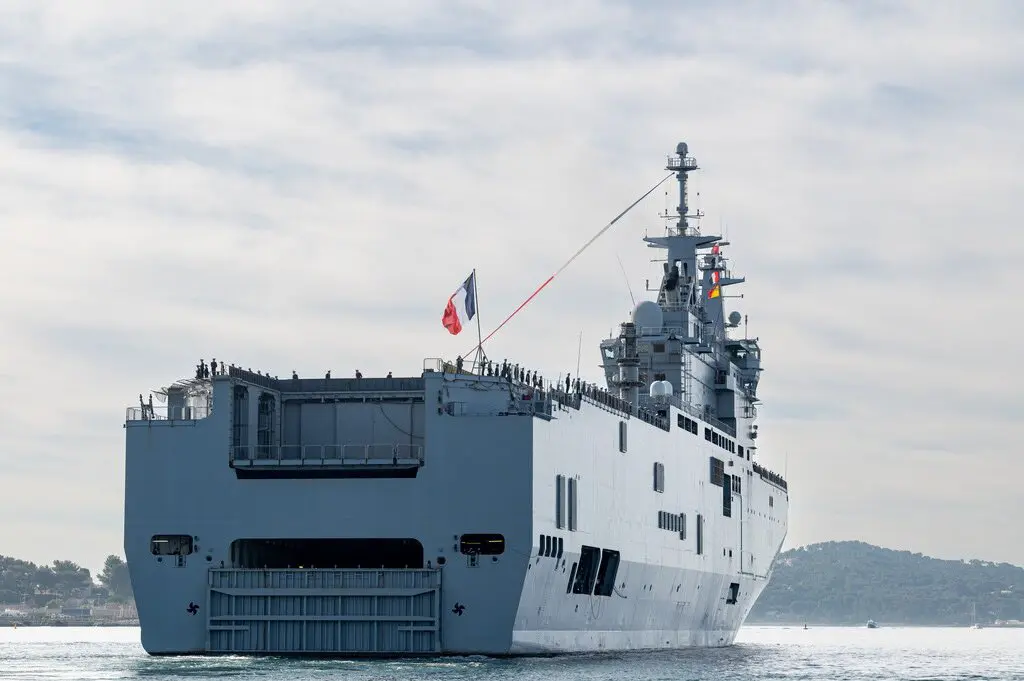Following the serious incidents in Haiti that led to a growing wave of violence, various countries are carrying out evacuation tasks of their citizens and reinforcing their diplomatic headquarters in Port-au-Prince. In this context, and under the order of President Macron, the French Armed Forces have launched an assistance plan for fellow citizens with the support of the PHA Tonnerre and special operations helicopters.

According to details provided by Captain de Navío Adrienne Schaar, commander of the amphibious helicopter carrier (PHA) Tonnerre, evacuation flights in Port-au-Prince began on the morning of March 24th with helicopter support. The special operations aircraft were transported by A400M Atlas aircraft of the French Air and Space Army to the Aimé Césaire International Airport in Martinique. Once on the ground, the helicopters proceeded to meet the Tonnerre, with Haiti as their final destination.
From the sequences published by the French Armed Forces General Staff, the presence of at least one H225M Caracal and one AS 532 Cougar Renové can be observed. It is highly likely that both helicopters belong to the 4th Regiment of Special Operations Helicopters, a unit that is part of the Light Aviation of the French Army (ALAT).
It is worth remembering that the Tonnerre is in the waters of the Caribbean Sea as part of the Jeanne d’Arc Mission. For this deployment, the French helicopter carrier has a detachment of embarked helicopters, consisting of two Gazelle from the 1st Combat Helicopter Regiment. Meanwhile, the frigate Guépratte has a Panther, both models of the light type, which is why the presence of the more capable Caracal and Cougar was arranged.

Like other countries, France has deployed special operations elements to assist in evacuation tasks, as seen in the video shared on social media. The presence of these types of troops may also be due to the intention of temporarily reinforcing the security measures of their diplomatic representations in Haiti, a mission usually assigned to the National Gendarmerie.
As we reported almost a month ago, the Jeanne d’Arc mission is composed of the amphibious helicopter carrier Tonnerre L9014 and the frigate Guépratte of the La Fayette class. Both units are scheduled to travel through the American continent, both along its Atlantic and Pacific coasts. During Jeanne d’Arc, amphibious exercises are planned in Brazil (Belém and Rio de Janeiro) and Chile (Valparaíso), while Buenos Aires, Ushuaia, Puerto Williams, Lima, and Cartagena will be some of the ports where the ships will make stops.
Jeanne d’Arc 2024 consists of 650 sailors, 162 cadets from the Naval Officers’ Application School (EAOM), 35 instructors, and 120 soldiers from the Army. The latter make up an Embarked Tactical Sub-Group [S/GTE], which has 40 vehicles of all types for amphibious operations. As mentioned earlier, both ships carry helicopters.

The land element is constituted by the Marine Tank Infantry Regiment [RICM], which includes two light cavalry platoons, a section of the 2nd Marine Infantry Regiment, a section of the 6th Engineer Regiment, and an observation team from the 11th Marine Artillery Regiment.
The Jeanne d’Arc 2024 Mission not only reflects France’s convergence of interests in the region but also takes place within the framework of the completion of the training process for future National Navy officers. It is for this reason that the group’s activities are oriented towards academic and operational activities, with the added benefit of being able to cooperate with the Armed Forces of friendly nations.
The presence of French ships to meet obligations arising from the situation in Haiti highlights the importance of having the necessary resources (human and material), as well as the flexibility of the French Armed Forces when facing such contingencies.
Cover image: État-Major des armées
You may also like: Brazil seeks more support from France for the development of the future Alvaro Alberto nuclear-powered submarine












